Adding hops during secondary fermentation, known as dry hopping, is essential for enhancing your beer’s aroma and flavor without adding bitterness. This process preserves volatile hop oils, creating vibrant floral and fruity notes. The ideal timing is 2-3 days before bottling. You can experiment with different hop varieties to tailor your brew’s profile. It’s also helpful to use hop bags for easier removal of sediment. Keep going to discover more about techniques and flavor development.
At a Glance
- Adding hops during secondary fermentation enhances aroma and flavor without increasing bitterness, preserving delicate hop oils.
- This process allows for biotransformation, where yeast interacts with hop compounds to create unique aromatic profiles.
- It maximizes aroma extraction, resulting in a vibrant floral and fruity bouquet in the beer.
- Dry hopping during this stage can help manage sediment and improve clarity by using hop bags or filter screens.
- Regular tastings during secondary fermentation enable brewers to track flavor changes and adjust hop quantities accordingly.
The Importance of Dry Hopping
When you dry hop your beer during secondary fermentation, you’re not just adding hops; you’re enhancing the overall aroma and flavor profile without increasing bitterness.
Dry hopping allows essential oils from the hops to infuse into your beer, leading to vibrant aromas. The ideal dry hopping period is 2-3 days before bottling, which helps extract these oils while preventing grassy flavors. Additionally, selecting the right yeast strains can significantly influence how those hop aromas are expressed in the final beer.
Experiment with various methods, like using a hop bag or a Hop Rocket for infusion. Remember, proper timing and technique are vital.
Helpful Hints:
- Document your dry hopping process.
- Adjust hop varieties for unique flavors.
How Dry Hopping Enhances Aroma
Dry hopping greatly enhances the aroma of your beer, making it a favorite technique among brewers. By adding hops during secondary fermentation, you preserve volatile hop oils, maximizing the extraction of aroma compounds.
Dry hopping enhances your beer’s aroma, preserving hop oils and maximizing flavor extraction during secondary fermentation.
This results in a more pronounced floral and fruity bouquet, enriching the overall hop character without introducing significant bitterness. Aim for a dry hopping period of 2-3 days before bottling to optimize aroma release while avoiding grassy flavors.
Additionally, yeast interacts with hop compounds, leading to unique aromatic profiles through biotransformation. This method allows better control of hop aroma, reducing oxidation and contamination risks. Incorporating citrus hops into your dry hopping strategy can further elevate the brightness of your IPA.
Helpful Hints:
- Use fresh hops for the best aroma.
- Experiment with different hop varieties for unique profiles.
Timing: When to Add Hops During Secondary
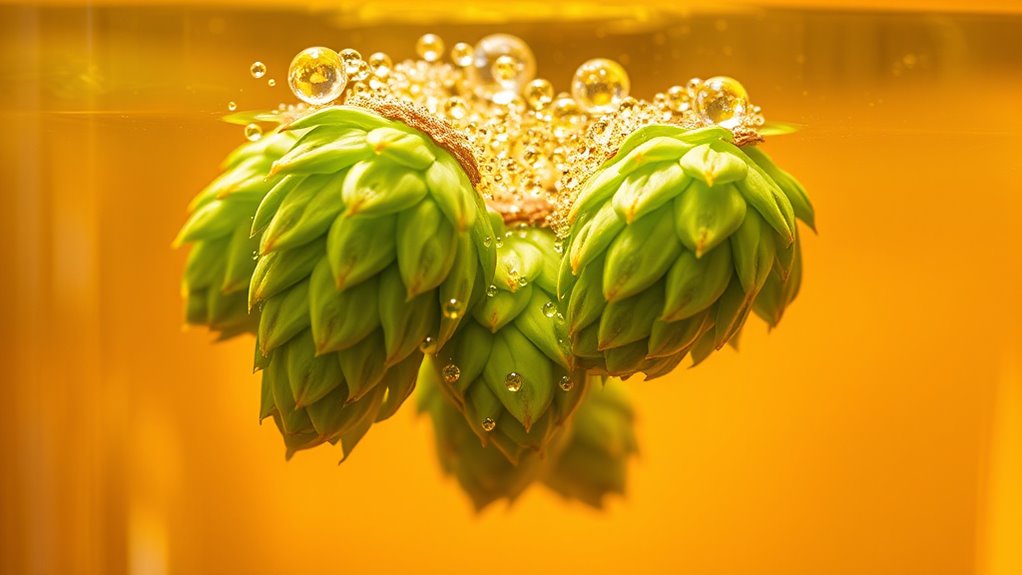
Incorporating hops during secondary fermentation is a strategic choice that can greatly improve the aroma of your beer.
The ideal timing for adding hops for dry hopping is typically 2-3 days before bottling. This timing allows for the best extraction of volatile hop oils, enhancing your brew’s aromatic profile without adding bitterness.
By adding hops after fermentation, you preserve delicate aroma compounds that boiling might destroy. However, consider cold crashing afterward to clear excess hop material and maximize hop oil transfer. Additionally, it’s essential to track cumulative hop additions to understand their combined effects on aroma and bitterness.
Following these steps helps guarantee a cleaner, more aromatic final product.
Helpful Hints
- Aim for 2-3 days before bottling.
- Preserve aromas by avoiding the boil.
- Cold crash for clarity.
Techniques for Effective Dry Hopping
Effective dry hopping techniques play an essential role in maximizing the aroma and flavor of your beer. To achieve the best results, consider these tips:
- Use Hop Bags: Contain your dry hop additions in bags to simplify removal and reduce sediment in the final product.
- Timing: Dry hop for 2-3 days to extract hop oils effectively while preventing grassy flavors.
- Monitor Fermentation Temperature: Aim for 65-75°F to enhance yeast activity, promoting unique flavor profiles through biotransformation.
- Cold Crashing: This technique helps sediment settle, resulting in clearer beer and improved hop oil transfer.
Additionally, using hop filter screens can further enhance the clarity and flavor extraction during the dry hopping process.
Choosing the Right Hop Varieties
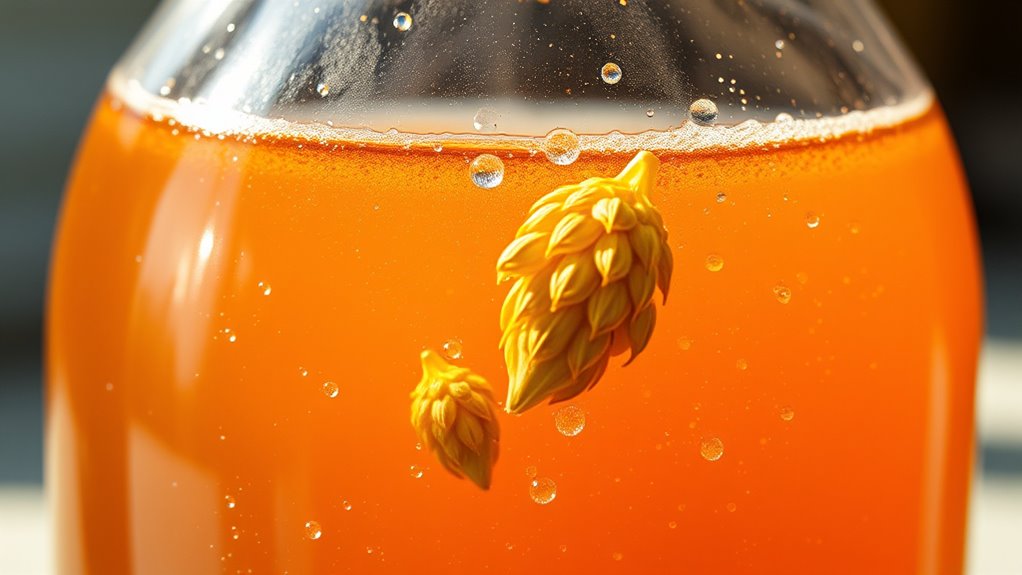
Choosing the right hop varieties is essential for achieving the desired flavor and aroma in your beer.
Consider the beer style; for instance, Cascade hops offer bright citrus notes in IPAs, while Saaz provides herbal characteristics in lagers.
Research the oil content of hop varieties, as higher oil levels can enhance aromas, though this isn’t always a direct correlation.
Don’t hesitate to experiment with classic hops like Centennial and newer options like Galaxy to find unique flavor profiles.
Utilize online resources to learn about effective hop pairings, which can greatly impact the overall character of your brew. Additionally, understanding American hop varieties can help you select those that best complement your beer’s profile.
Helpful Hints
- Match hop varieties to beer styles.
- Investigate oil content for aroma intensity.
- Experiment with blends for innovation.
- Consult brewing communities for insights.
Quantities: How Much to Use
When it comes to determining the right hop quantities for your brew, understanding the specifics of your beer style is essential.
For a 5-gallon batch, consider dry hopping with 0.5 to 4 ounces. For instance, American pale ales typically need 0.5 to 1 ounce, while IPAs may require up to 2 ounces. Double IPAs can benefit from 2 to 4 ounces.
Remember, limiting dry hopping to around 1.1 ounces per gallon can prevent diminishing returns on hop flavor.
Don’t hesitate to experiment with different hop varieties and quantities to tailor the aroma to your personal preference and enhance your beer’s profile.
Managing Sediment and Clarity
To achieve a clean and clear beer, it’s vital to focus on managing sediment during the secondary fermentation process.
Managing sediment during secondary fermentation is crucial for achieving a clean and clear beer.
Consider these techniques to enhance clarity:
- Use a Hop Bag: When dry hopping, place hops in a hop bag to contain sediment, making removal easier.
- Racking: Move your beer to a secondary fermenter before dry hopping to separate it from yeast sediment that can cause off-flavors.
- Cold Crashing: After dry hopping, cold crash your beer to help excess hop material settle, promoting clarity.
- Monitor Dry Hopping Duration: Limit time to prevent grassy flavors and guarantee a cleaner final product.
Additionally, ensuring that all equipment is properly sanitized before use is essential to prevent contamination during the fermentation process, particularly with sanitizing brewing equipment.
Common Challenges and Solutions
Here are some common issues and solutions:
- Oxidation: Minimize oxygen exposure by using sanitized equipment and transferring your beer carefully. Oxygen exposure can lead to off-flavors and reduced shelf life, so it’s critical to manage it effectively.
- Hop Quantities: Avoid over-hopping by measuring hop quantities; typically, use 0.5 to 4 ounces per 5-gallon batch.
- Dry Hopping Duration: Limit dry hopping to 2-7 days to prevent grassy flavors and maintain ideal flavor retention.
Experimentation and Flavor Development
Experimenting with hops during secondary fermentation opens up a world of possibilities for flavor development in your beer. By adding hops at this stage, you preserve essential oils, enhancing aromas without introducing bitterness.
This technique allows you to explore different hop varieties and combinations, leading to unique flavors tailored to your preferences. Remember, shorter contact times—2 to 3 days—better retain volatile hop oils.
Regular tastings during this process can help you monitor flavor changes, enabling you to adjust hop quantities or types accordingly. Embrace this experimentation to discover exciting flavors and aromas that enhance your brewing creativity. Additionally, consider buying hops in bulk to ensure you have a variety of fresh options available for your experiments.
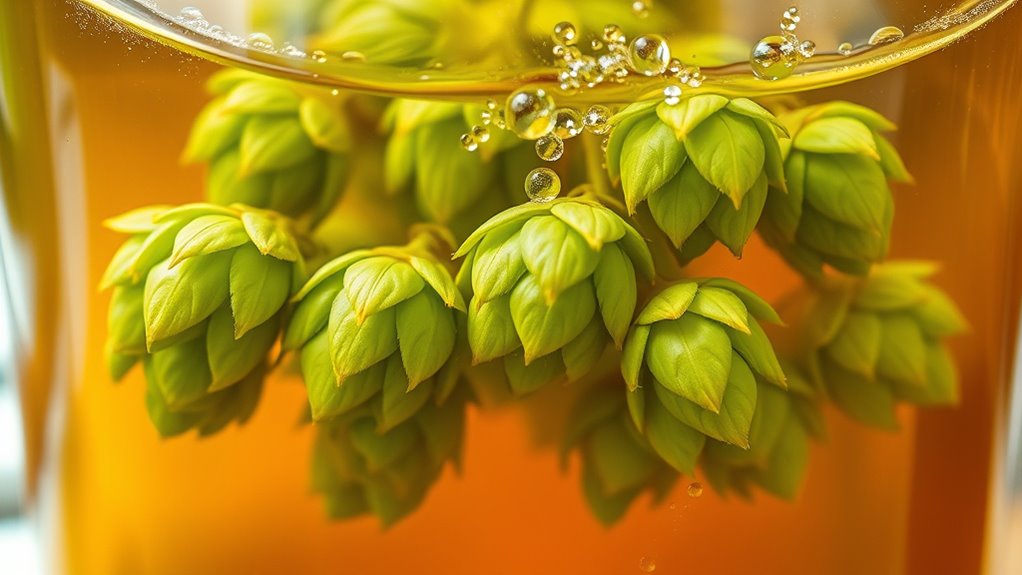
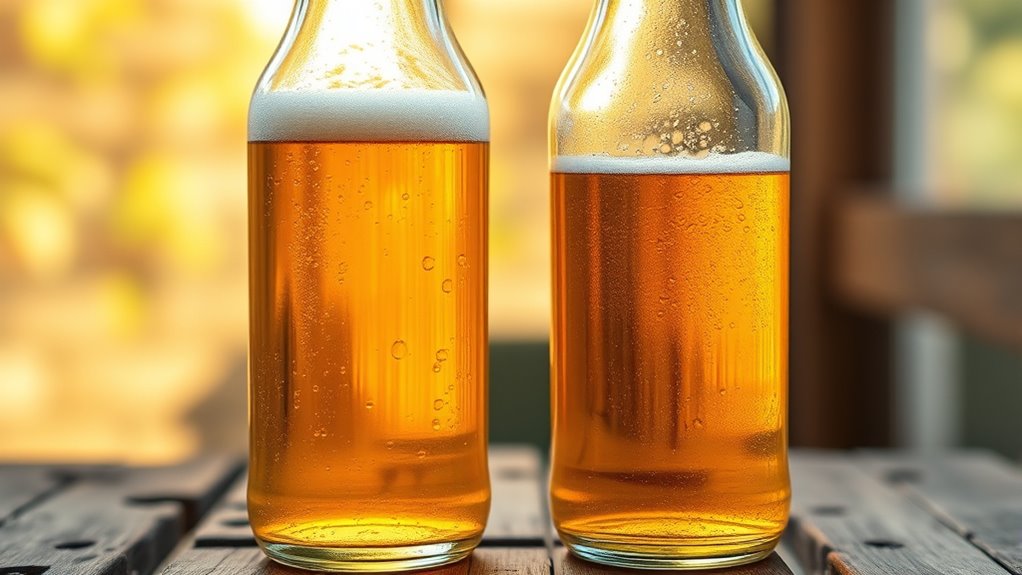
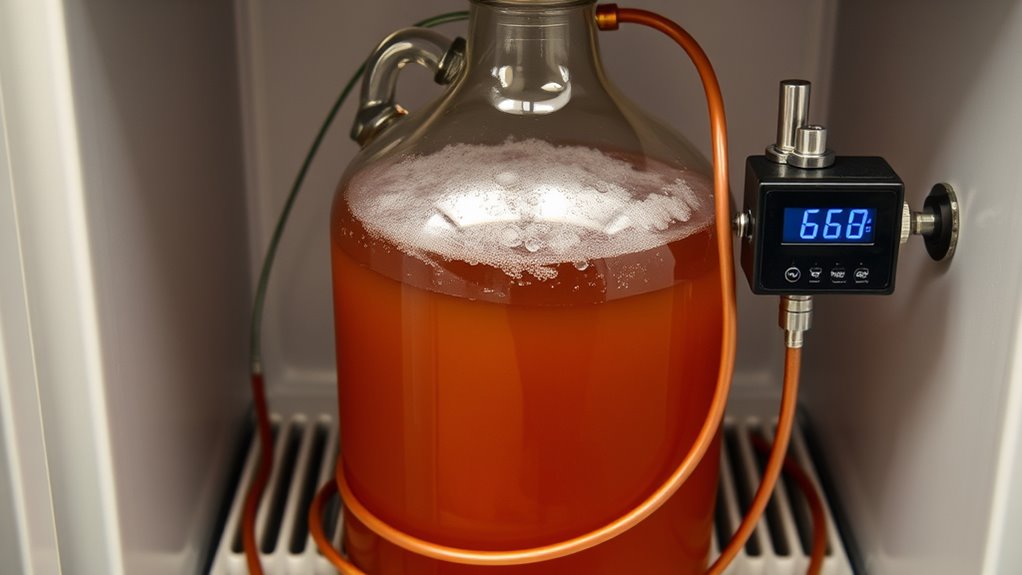
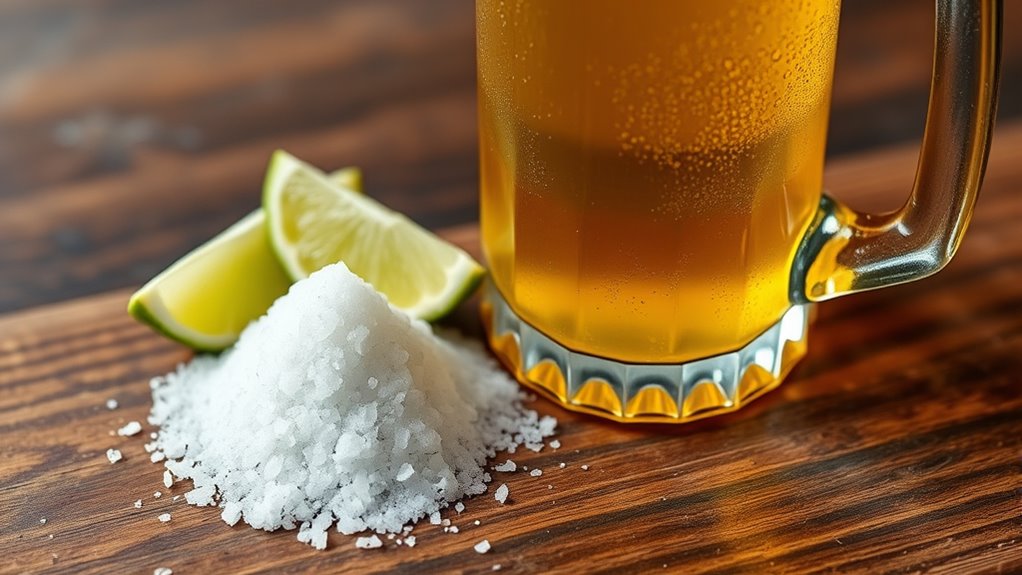
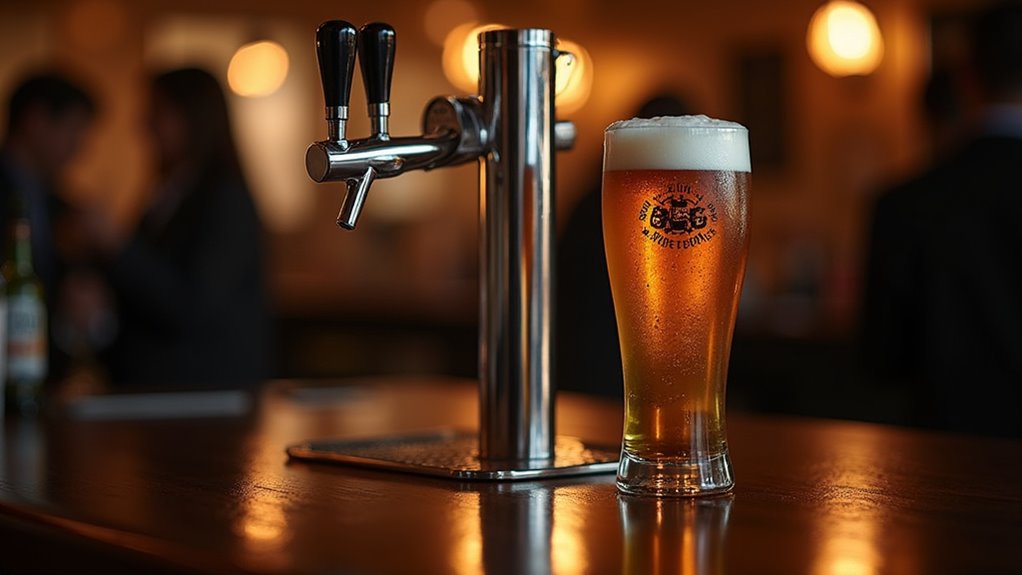
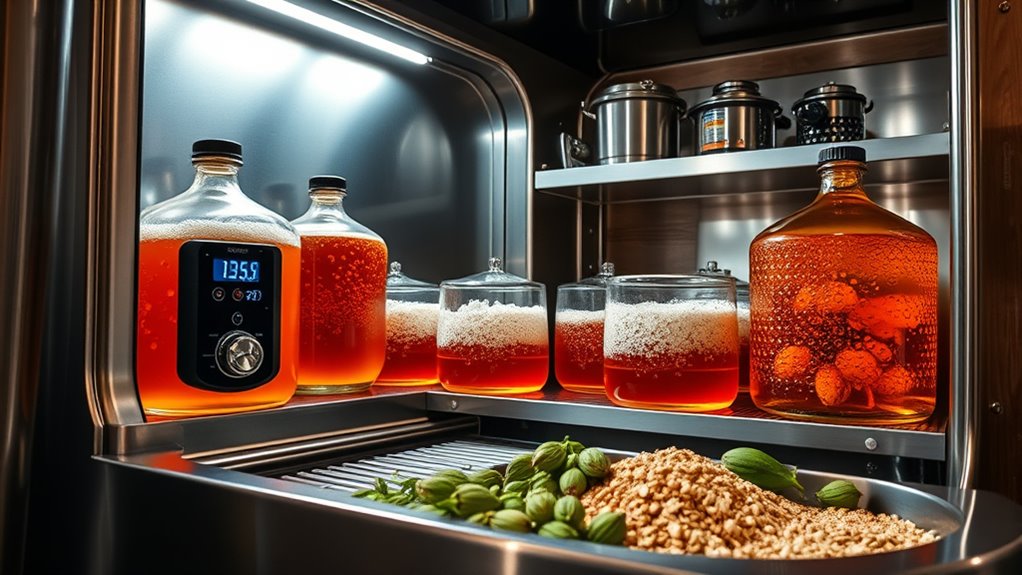
1 comment
Comments are closed.